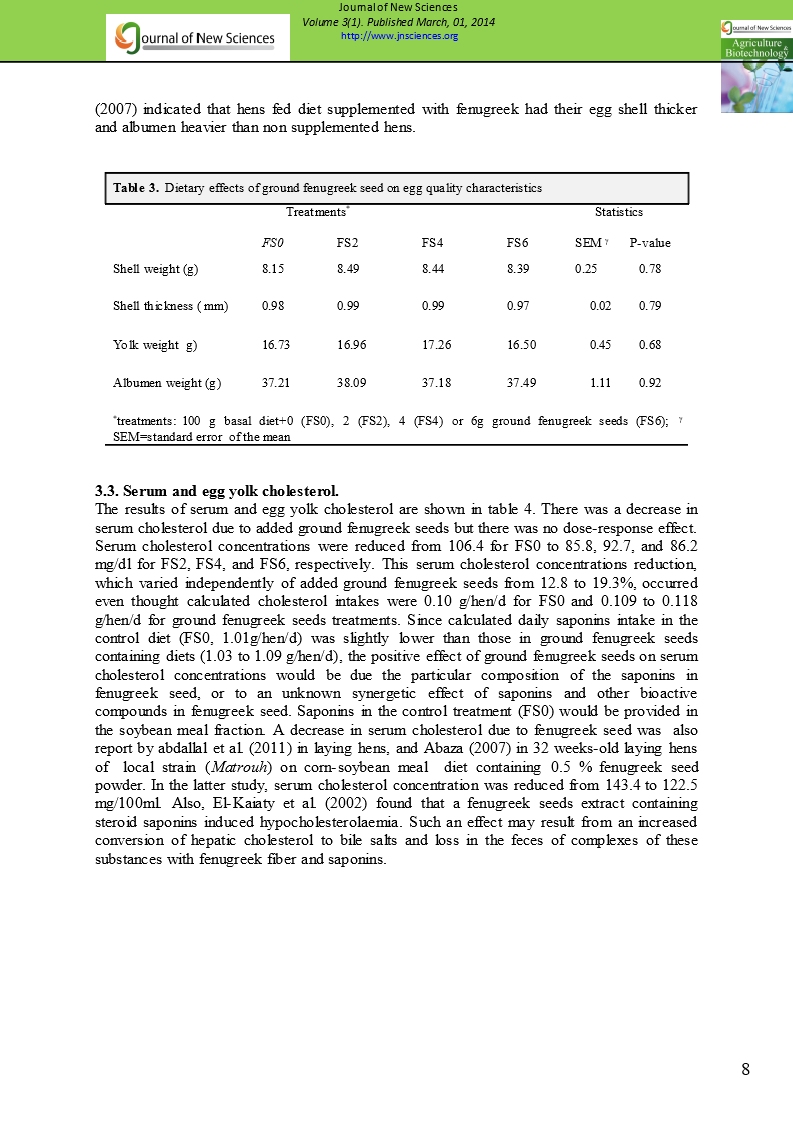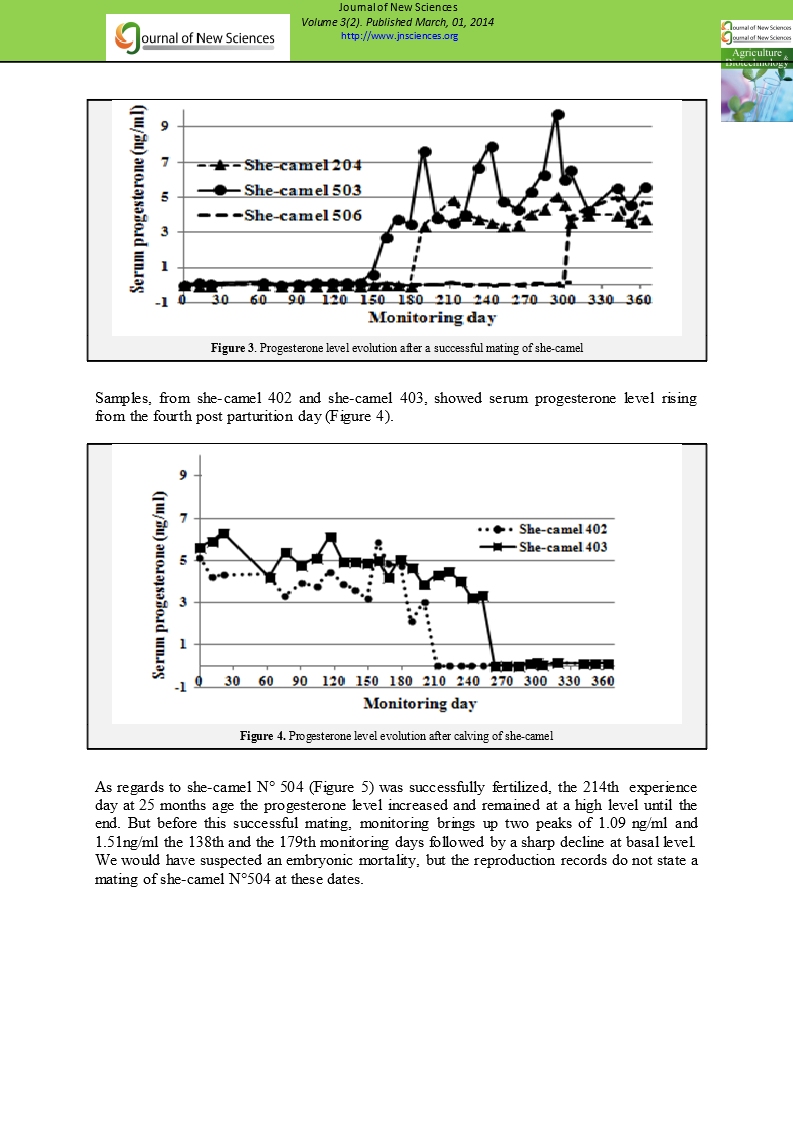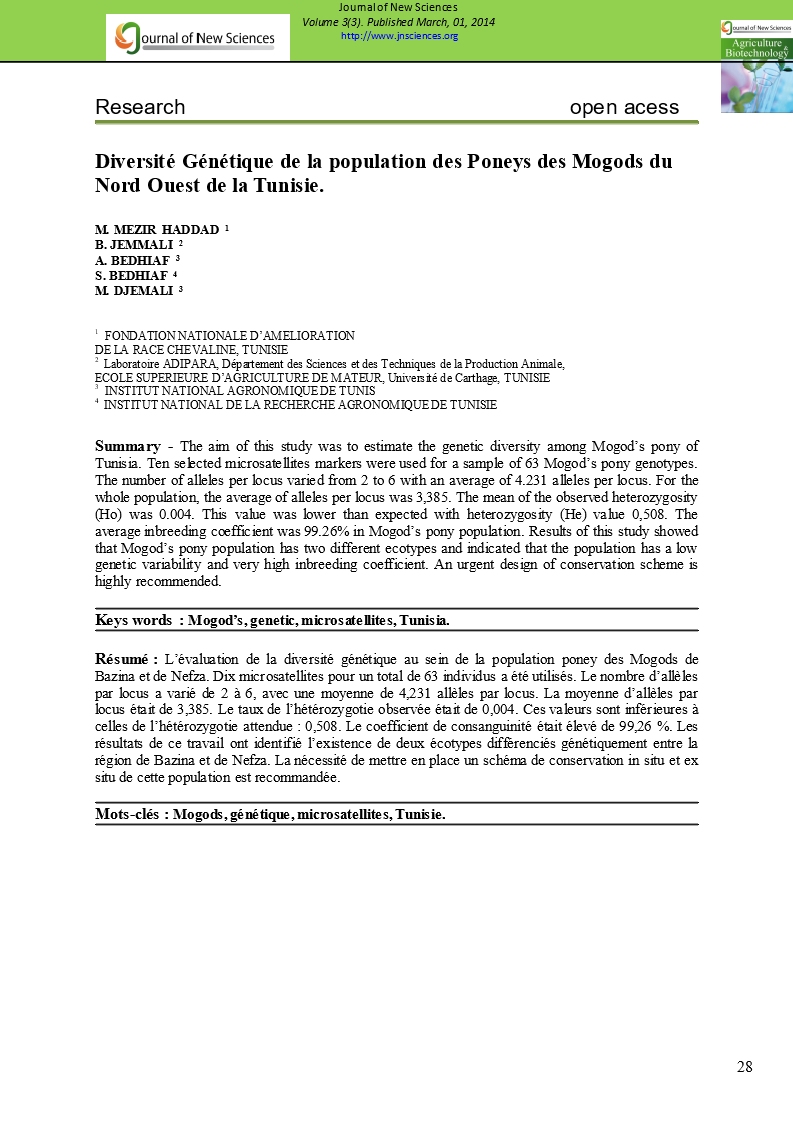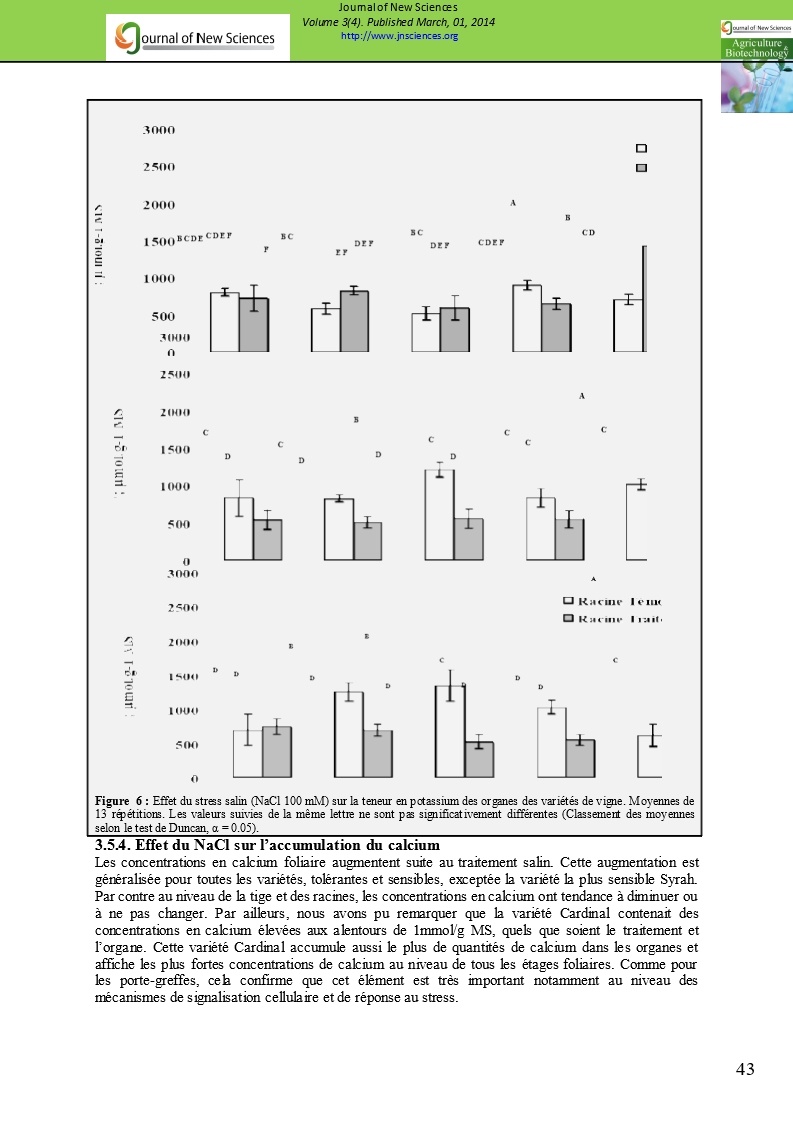- Category: Volume 3
- Hits: 15486
Effect of feeding hens with fenugreek seeds on Laying performance, egg quality characteristics, serum and egg yolk cholesterol

H. Abdouli 1*
M. Haj-Ayed 2
S. Belhouane 1
E. Hcini Emna 1
1 Department of Animal production, ESA Mateur, Carthage University , Tunisia
2 Department of Animal production, ISA Chott Mariem, Sousse University , Tunisia
Summary - A study was conducted to evaluate the effects of ground fenugreek seeds given to laying hens at 0 (FS0), 2 (FS2), 4 (FS4) or 6 (FS6) g/hen/d on laying performance, egg quality characteristics, serum and egg yolk cholesterol concentrations. Forty, 52-week-old, Lohmann White laying hens (10 hens per treatment) were fed for 7 weeks 100 g/d of a basal diet in addition to the specified ground fenugreek seeds amounts. While FS6 showed highest body weight loss at the end of the experiment (115.3 for FS6 vs 31.8, 28.9 and 97.0 g/hen for FS0, FS2 and FS4, respectively), there were no differences among treatment groups for daily feed intake (99.3, 101.2, 103.2 and 105.2 g/hen for FS0, FS2, FS4 and FS6, respectively), hen-day laying rate (83.7% for FS0 to 79.4% for SF6), egg weight (61.7 g for FS4 to 63.1 g for FS2), egg mass (48.6 g /hen/d for FS6 to 51.8 g /hen/d for FS0), feed efficiency (feed intake/egg mass, 1.93 for FS0 to 2.17 for FS6) and egg quality characteristics. Shell weight varied from 8.15 g for FS0 to 8.5 g for FS2. Shell thickness varied from 0.97 mm for FS6 to 0.99 mm for FS2. Yolk weight ranged from 16.5 g for FS6 to 16.7 G for FS0. Albumen weight ranged from 37.2 g for FS4 to 38.1 g for FS2. Inclusion of ground fenugreek seeds reduced blood serum cholesterol from 106.4 mg/dl to 85.8, 92.7 and 86.2 mg/dl for FS2, FS4 and FS6, respectively. It did not affect egg yolk cholesterol (21.4 mg/g for FS6 to 22.9 mg/g for FS0). It can be concluded that ground fenugreek seeds given to Lohmann White laying hens at up to 6 g/hen/d had no effect on feed intake, laying production performance and egg quality but reduced hen’s serum cholesterol.
Keys words :Fenugreek seed, hens, egg, cholesterol



